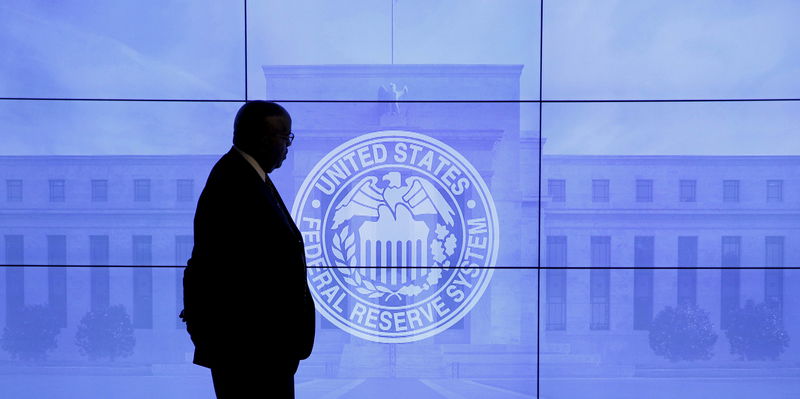Investing.com - The Federal Reserve is widely expected to keep policy on hold when it concludes a two-day meeting on Wednesday, but investors are hoping that the bank’s rate statement will reveal more about Fed policy for the second half of the year.
The Fed decision will come at 2 p.m. ET on Wednesday.
With no press conference or economic projections scheduled to be released following the meeting, the Fed statement will be parsed for any small changes in language which could point more clearly to a rate hike in the months ahead.
Market players will also pay close attention to details of when and how the Fed will start reducing its $4.5 trillion balance sheet.
The Fed purchased U.S. Treasuries and mortgage-backed securities for around six years in a program known as quantitative easing which kept interest rates at record lows in order to spur borrowing and economic growth.
The Fed has said it would pause rate hikes when it begins to unwind its balance sheet. The balance sheet reduction is expected to put slight upward pressure on interest rates.
The Fed has raised rates twice so far this year.
Analysts at Morgan Stanley believe the Fed statement is likely to indicate that policy makers are ready to begin normalizing the central bank's balance sheet relatively soon, solidifying expectations for a September announcement.
Morgan Stanley analysts also think the Fed will resume hiking rates in December after a pause in September; saying that it will be “a painful wait” for investors.
According to Investing.com’s Fed Rate Monitor Tool, conviction for another rate hike before the end of the year has faded, with just 35% of investors expecting another move.
The subdued inflation outlook has raised doubts over whether policymakers will be able to stick to plans for a third hike this year.
U.S. annual inflation rose by 1.6% in June, the smallest increase since October of last year and year-on-year inflation has been declining since February when it hit 2.7%.
Economic growth has also not picked up as previously thought and is now expected to be modest at best for this year and next.
The Fed will likely to stick to its longer-run forecast of 2% inflation but could acknowledge it may take longer than they thought.
The Fed is likely to upgrade the description of job growth, but might also recognize that inflation has declined further, analysts at Goldman Sachs wrote in a note ahead of the meeting.
Goldman analysts said that they still expect the Fed to announce the start of balance sheet normalization in September.
Looking ahead, analysts at Goldman said they see a 5% probability that the next rate hike will come in September, a 5% probability that it will come in November, and a 50% probability that it will come in December, for a 60% cumulative probability of at least three hikes this year.
Meanwhile, analysts at the Royal Bank of Canada said there should be only modest adjustments the Fed’s economic outlook and they expect no change to the policy language.
They also believe an announcement on balance sheet normalization is unlikely at this week’s meeting, seeing an announcement in September instead and added that they see the next rate hike in December.
